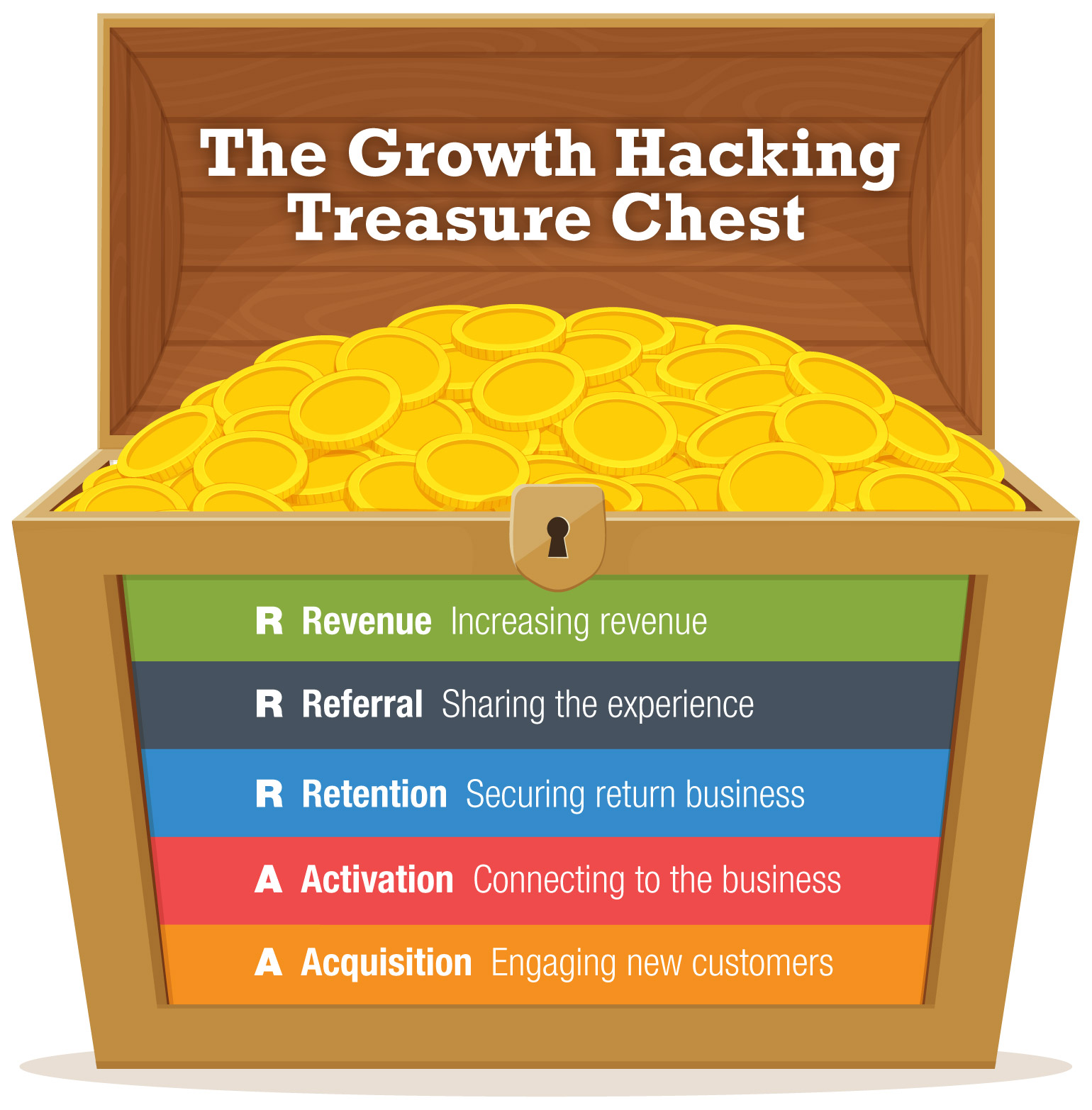The Payroll Blog
News, tips, and advice for small business owners
The Pirate Funnel Guide to Growth Hacking for Small Businesses
Channeling curiosity, creativity, and innovation—the cornerstones of growth hacking—can help small business owners acquire new customers at a low cost

AAARRR, Matey
Growth hacking, sometimes referred to as the Pirate Funnel, is a broad term for a state of mind and map of activities focused on landing new customers on the cheap.
Based on a six-plank funnel—awareness, acquisition, activation, retention, revenue, and referral, or AAARRR—the acronym aptly conjures the image of a swashbuckler seeking treasure. Small business owners who adapt the Pirate Funnel to their needs efficiently capture sales from new and existing customers and quickly maximize growth.

Inspired by the work of David McClure)
Cracking the Growth Hacking Treasure Chest
There’s no magic involved in growth hacking; rather, it requires practice, curiosity, and innovation. The most successful growth hackers are vigilantly resourceful at finding creative ways to encourage existing customers to spend more, and entice new customers to make that first purchase… and then return for more.
A/B testing, a type of data experiment, is a common growth hacking practice. The testing uncovers what’s working and what’s not with marketing outreach, helping small business owners avoid wasted time and resources. Beneficial to businesses of all sizes, A/B testing is especially important for startups and small businesses which typically don’t have the financial luxury to invest without a solid return on investment.
Content marketing is very much geared at building awareness, creating connections, and building or strengthening customer relationships. The trick with content marketing is to create interest and engagement without directly promoting a product or service. Content marketing leverages online professional and social networking, and search engine optimization (SEO) to stimulate interest and buzz around a business. With a relatively small—or even no—investment, a business owner can connect with consumers through blogs, videos, social media platforms, podcasts, webinars, contests, giveaways, reviews, tutorials, testimonials, influencer partnerships, email marketing campaigns, and more. When it comes to video, businesses that use video marketing grow revenue 49% faster than those that do not.
Key to effective content marketing is the art of dropping a viral headline. Many people share content after only reading the headline. Growth hackers frequently leverage this habit by creating provocative—yet meaningful—headlines to entice users to click and learn more. The ideal viral headline length is between 6 and 10 words, and headlines with numbers perform better than those with just words, increasing click-through rates by 206%.
Lead magnets are a free resource used to entice and incentivize consumers to opt-in to the company email list. Lead magnets include checklists, coupons, free trials, cheat sheets, samples, free quotes, templates, scripts, calendars, planners, worksheets or workbooks, quizzes, e-books, case studies, toolkits, apps, and resource lists that save users from doing specialized research. Growth hackers who use lead magnets were 57% more likely to report strong results from their content marketing.
Growth hackers know short & sweet is best when it comes to the initial information capture for the marketing distribution list. Conversion rates increase by more than35% with a simplified sign-up process. Growth hackers also regularly practice distribution list purges to optimize email open rates. While email may seem old school, it still offers potential returns of up to 4,400%, especially when the subject line is intriguing.
Another popular tactic in growth hacking is FOMO Marketing. FOMO Marketing (fear of missing out) capitalizes on the very human need to “get mine before it’s gone.” An excellent strategy to drive impulse purchases, FOMO marketing leverages exclusive offers and rewards, limited-time special offers, premium add-ons, bestselling or top-rated items, shopping cart time-limit savings items, referral incentives for successful referrals, showcases “live” sales, inventory “countdown clocks,” and more. Generating a sense of urgency to buy a product that could sell out is most effective against the 7 in 10 millennial-aged consumers who reported experiencing FOMO.
Rewarding social shares with discounts and special offers is a cost-effective growth hack, especially since 68% of social media users aged 18-34 report they are somewhat likely to make a purchase based on their friends’ social media posts. Plus, this tactic helps turn your customers and prospects into members of the marketing team. Similarly, loyal customers spend an average of 67% more than new customers.
Setting Sail with Growth Hacking
At its core, growth hacking is about unlocking tactics creatively targeted to your business to drive efficient growth. Businesses of any size will benefit from growth hacking, but the practice is especially helpful for small businesses and startups. Set your growth destination, establish metrics, adapt along the way, and start hacking.
View Our Plans and Pricing
Small Business Is Our Business.
This website contains articles posted for informational and educational value. SurePayroll is not responsible for information contained within any of these materials. Any opinions expressed within materials are not necessarily the opinion of, or supported by, SurePayroll. The information in these materials should not be considered legal or accounting advice, and it should not substitute for legal, accounting, and other professional advice where the facts and circumstances warrant. If you require legal or accounting advice or need other professional assistance, you should always consult your licensed attorney, accountant or other tax professional to discuss your particular facts, circumstances and business needs.
